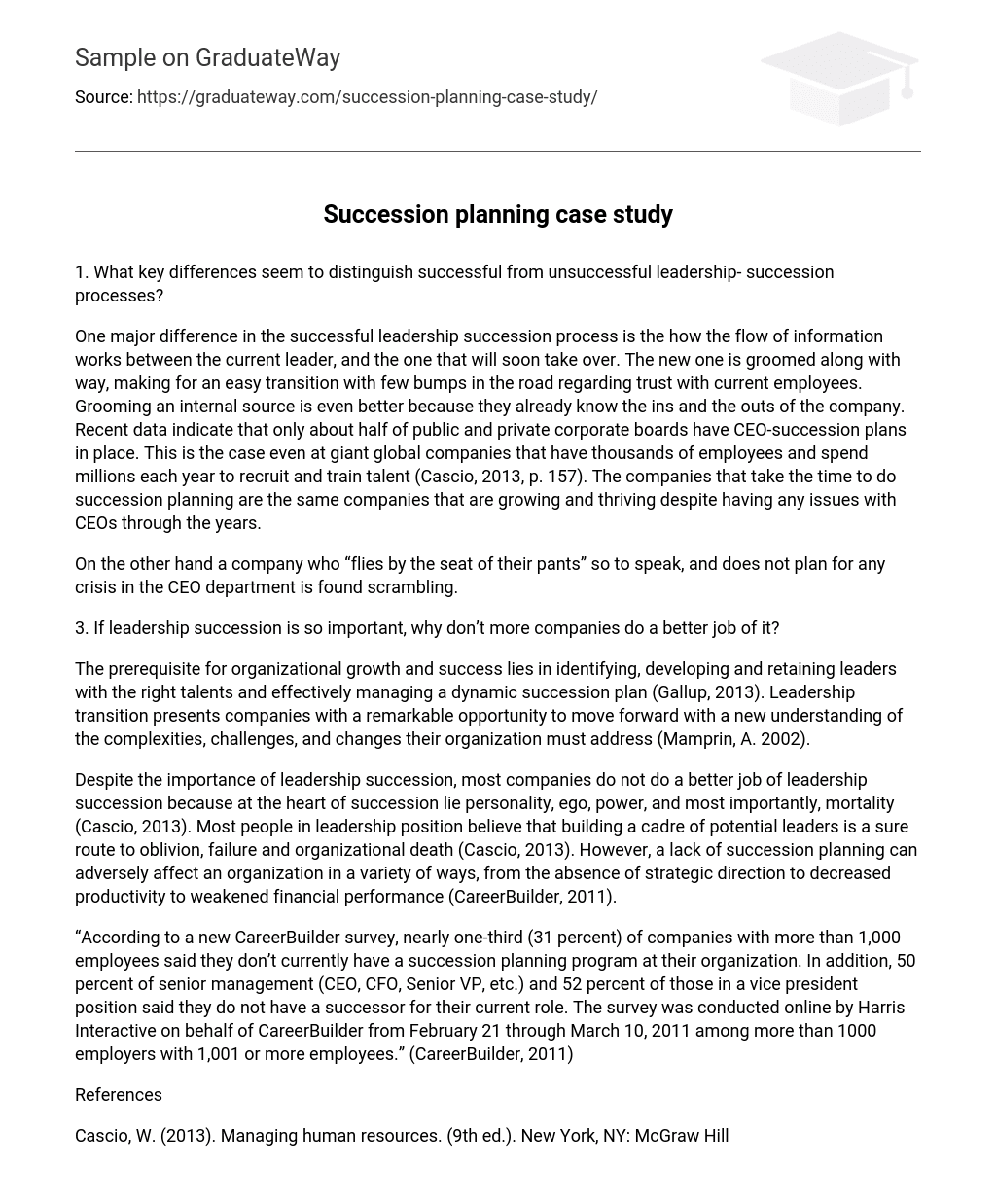What are the key differences that appear to differentiate successful leadership succession processes from unsuccessful ones?
Successful leadership succession processes involve effective communication and information sharing between the current leader and the future leader. This ensures a smooth transition and minimal trust issues with existing employees. It is particularly advantageous to groom an internal candidate, as they are already familiar with the company’s operations. Surprisingly, only around 50% of public and private corporate boards have CEO-succession plans in place, including large global companies that invest significant resources in talent recruitment and training (Cascio, 2013, p. 157). However, the companies that prioritize succession planning are the ones that continue to grow and thrive, overcoming any CEO-related challenges over the years.
On the contrary, a company that does not plan for any crisis in the CEO department and instead operates in a spontaneous manner, is often caught off guard and forced to react quickly.
3. Why do so few companies excel at leadership succession?
The key to organizational growth and success is finding, nurturing, and keeping leaders who have the right skills, while effectively managing a constantly evolving plan for replacing them (Gallup, 2013). When a leadership transition happens, companies have a unique chance to progress with a fresh understanding of the complexities, challenges, and changes that their organization needs to face (Mamprin, A. 2002).
Despite the importance of leadership succession, numerous companies encounter difficulties in adequately preparing for it. Challenges arise from factors such as personality, ego, power, and mortality (Cascio, 2013). The fear of failure and organizational collapse often prevents leaders from effectively grooming future leaders (Cascio, 2013). However, neglecting to plan for succession can result in adverse outcomes for an organization including a lack of strategic direction, decreased productivity, and weakened financial performance (CareerBuilder, 2011).
The CareerBuilder survey conducted by Harris Interactive in 2011 revealed that approximately 31% of companies with more than 1,000 employees lack a succession planning program. The survey also discovered that 50% of senior management and 52% of vice presidents have not designated successors for their positions. Responses were collected online from over 1,000 employers between February 21 and March 10, 2011.
References
The book “Managing human resources” by Cascio, W. (2013) is in its 9th edition and is published by McGraw Hill in New York, NY.





